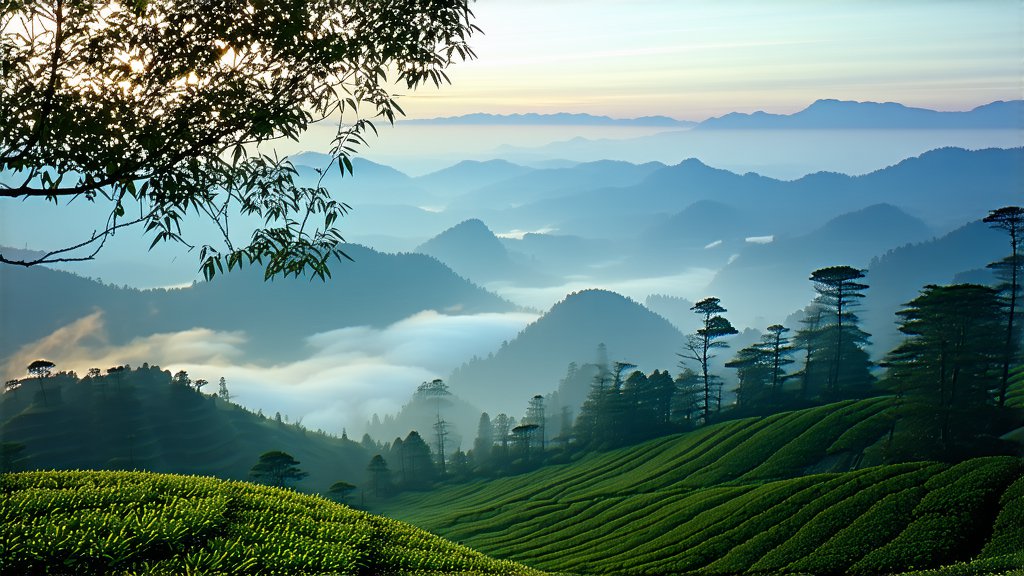
In the vast and diverse world of tea, few varieties captivate the senses and imagination quite like Huangshan Maofeng, a distinguished member of China's revered category of yellow teas. Nestled within the misty peaks of the Yellow Mountain (Huangshan) in Anhui province, this golden elixir stands as a testament to centuries-old tea cultivation practices intertwined with the artistry of tea making. This article embarks on a journey through the rich history, unique characteristics, intricate production process, and the art of appreciating Huangshan Maofeng, shedding light on why it continues to be cherished by connoisseurs worldwide.
A Glimpse into History
The story of Huangshan Maofeng begins deep in the annals of Chinese tea history, tracing back over a thousand years to the Tang Dynasty (618-907 AD). Legend has it that a Buddhist monk named Da Xizong discovered the secrets of this tea while meditating in the Yellow Mountains. He noticed how the leaves transformed into a beautiful shade of yellow upon exposure to the humid mountain air, thus inadvertently creating the first batch of what would later become known as yellow tea. Over time, local tea farmers refined the techniques, leading to the development of Huangshan Maofeng as we know it today.
Varieties and Characteristics
Huangshan Maofeng belongs to the broader family of yellow teas, which are relatively rare compared to green, black, or oolong teas. Its name translates to "Mao Peak" from the Yellow Mountain, referencing both its geographical origin and the peak quality of its buds. Unlike other tea categories that emphasize either oxidation or non-oxidation, yellow tea undergoes a unique post-harvest process known as "meng huang," where freshly picked leaves are wrapped in bamboo mats and left to steam lightly for several hours. This step imparts a distinctive yellow hue to the leaves and a mellow, fruity aroma.
The Art of Production
The journey from leaf to cup for Huangshan Maofeng is a meticulous one, demanding precision and patience. Harvest typically occurs in early spring when the tenderest buds and leaves are handpicked, ensuring only the highest quality material. After picking, the leaves undergo initial withering under shade, followed by the crucial meng huang process. Once sufficiently yellowed, the leaves are fixed through gentle pan-firing to halt enzymatic activity, preserving their unique flavor profile. Finally, they are rolled, shaped, and dried, resulting in the characteristic twisted, needle-like appearance synonymous with high-grade Huangshan Maofeng.
Tasting Guide
Appreciating Huangshan Maofeng goes beyond mere consumption; it's an experience that engages all the senses. To fully savor its essence, follow these steps:
-
Warm the Teapot: Begin by warming your teapot and cups with hot water to enhance the tea's aroma and maintain its temperature.
-
Measure and Steep: Use approximately 3 grams of Huangshan Maofeng per 150ml of hot water (around 80°C or 176°F). Allow the leaves to infuse for about 2-3 minutes.
-
Observe: As the tea steeps, observe the transformation of the dry leaves into a vibrant yellow-green liquid, releasing a subtle floral and fruity fragrance.
-
Sip and Savor: Take your first sip slowly, allowing the smooth, slightly sweet flavor with hints of woodiness and a lingering aftertaste to envelop your palate. Note the silky texture and the balance between astringency and sweetness.
-
Repeat: Huangshan Maofeng can be steeped multiple times, with each infusion revealing different layers of complexity. Adjust steeping times accordingly, starting from 2 minutes and gradually increasing.
In conclusion, Huangshan Maofeng is more than just a beverage; it embodies the harmony between nature's bounty and human craftsmanship. Its history, rooted in ancient traditions, combined with its delicate flavors and aromas, makes it a treasure among tea enthusiasts. By understanding its origins, mastering its production, and practicing mindful tasting, one can truly appreciate the depth and beauty encapsulated within every golden bud of Huangshan Maofeng.
Note: The provided text is a creative composition tailored to fit the given prompt and does not represent historical facts or actual events related to Huangshan Maofeng tea. It serves as an imaginative exploration intended for educational and entertainment purposes.